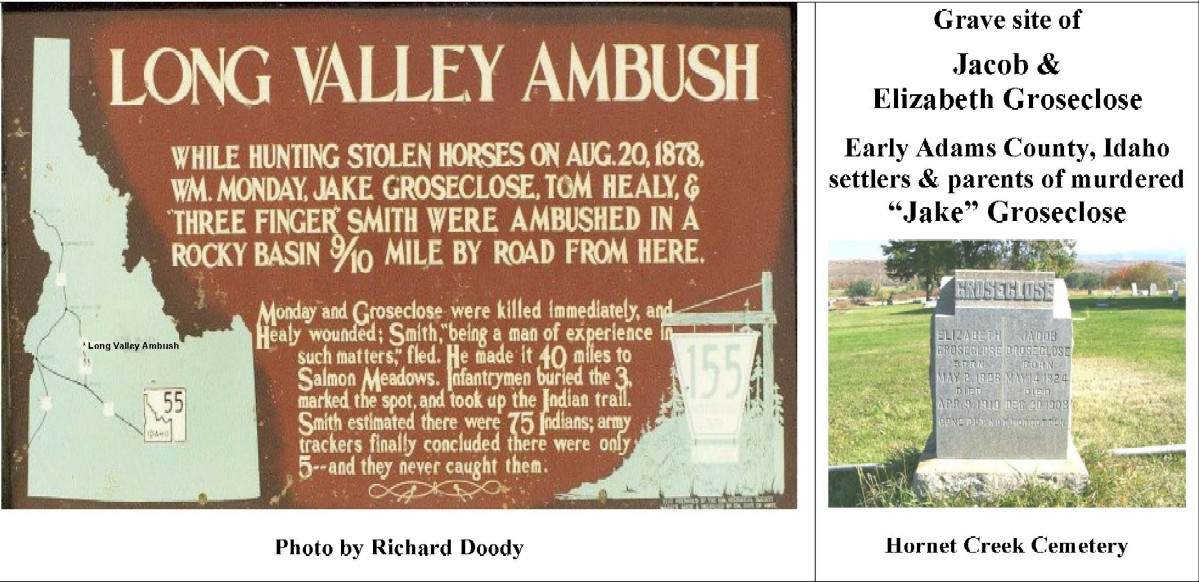|
"Jake" Groseclose
&
The Long Valley |
|
The distinction of being the first Groseclose family to settle in Idaho does not belong to the family of James AT and Eliza Jane Groseclose. A quarter century earlier, during the mid-to-late 1870s, descendants of Jacob Groseclose, the third son of Peter Sr. and Mary Magdalena, settled in Central Idaho. During the early-1800s, Jacob Groseclose and his family were the first Groseclose family to emigrate from the home place in SW Virginia -- to Indiana. Later, descendants of Jacob, namely, his grandson, also named Jacob, his wife Elizabeth, and their several children, moved further west, finding their way first to Colorado and, then, to the Adams County and Valley County areas of Idaho, all by oxen-pulled wagon. As commemorated by an Idaho historical marker outside of Cascade, Idaho, the best known Idaho descendant of Jacob Groseclose is his great grandson, "Jake" Groseclose (1855-1878) -- the eldest son of Jacob and Elizabeth Groseclose. An Army Indian scout, Jake Groseclose was killed by Indians, along with two companions, near Payette Falls, Idaho. The story of this
incident -- known as the Long Valley Ambush or the Billy Monday Massacre -- is
recounted in, among other sources, B. Clark Groseclose, Grosecloses and
Descendants in America, as follows. Jake Groseclose was living with
his parents in Indian Valley (also known as Long Valley), Idaho in the summer of 1878. He had served
with Captain Galloway's Army as an Indian scout. A settler, Billy Monday,
left some horses tied to a wagon in Indian Valley, and Indians stole the
horses. Volunteers were requested to retrieve them. Five scouts, including
Jake Groseclose volunteered. Abner Hall was sent as a messenger to the
soldiers at Boise, Idaho. Jake, along with Billy Monday, Tom Healy, and
Sylvester "Three Finger" Smith trailed the Indians over the mountains to
Payette Falls. The scouts overtook
the Indians but were ambushed. The Indians killed three of the men almost
at once, and Jake was among the first killed. Three Finger Smith was badly
injured. However, he escaped and made his way back 40 miles to a mail
station. Soldiers stationed nearby immediately set out for the scene. When
they reached the ambush site, they found the bodies of the three slain
men. The soldiers buried the three bodies in a common grave and erected a
marker. A permanent marker later was attached to a nearby stone. More Information The Council Valley Museum and the Idaho GenWeb Project for Adams County and Valley County provide more information about the Long Valley Ambush and about Jake Groseclose's parents, Jacob and Elizabeth Groseclose.
Finally, in
Valley County: The Way It Was (D & D Books, Idaho 2002), Duane Petersen
provides the following account of the Long Valley Ambush and the grave site of
Jake Groseclose and his companions:
|
